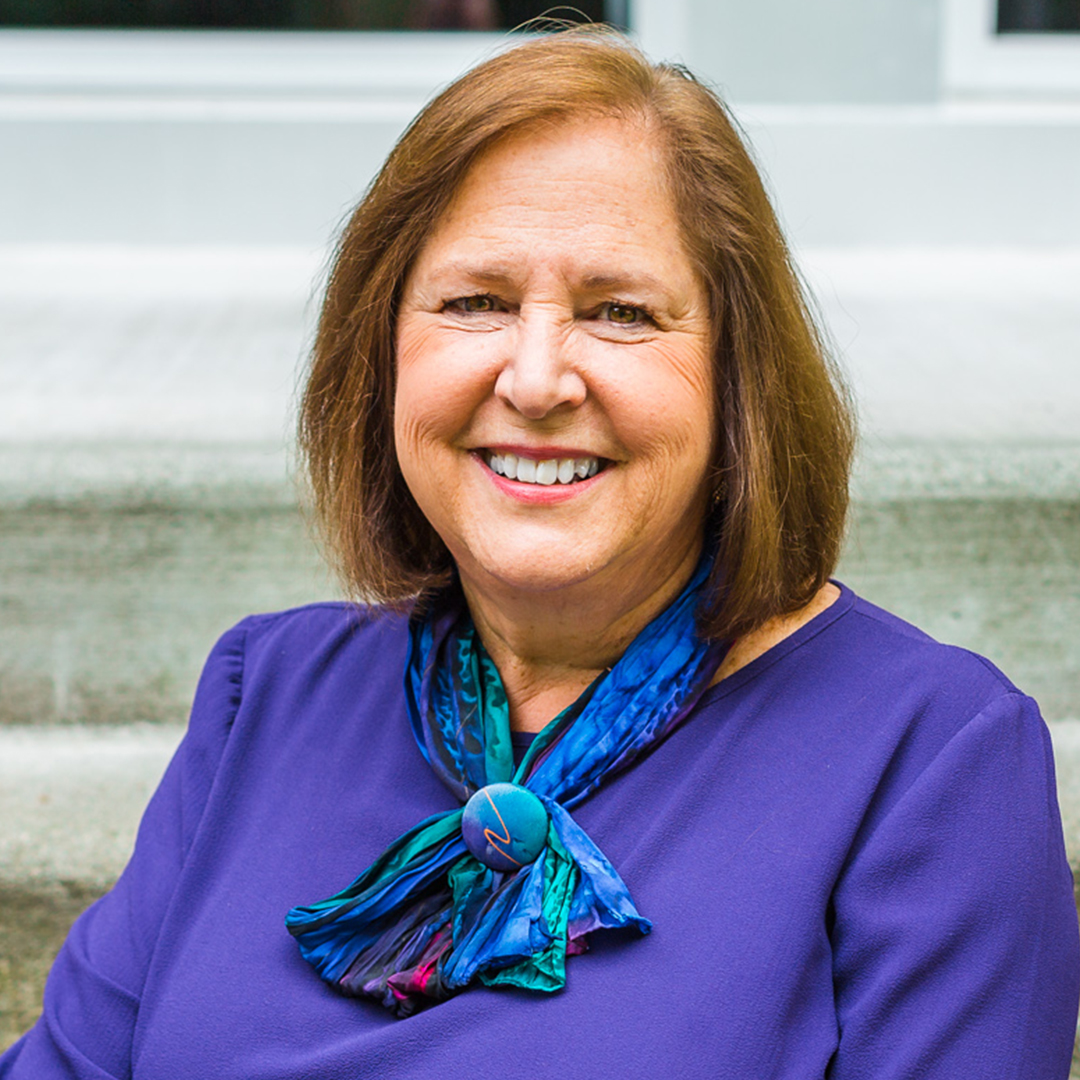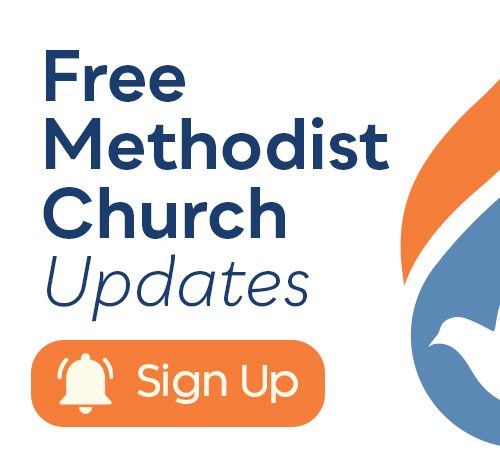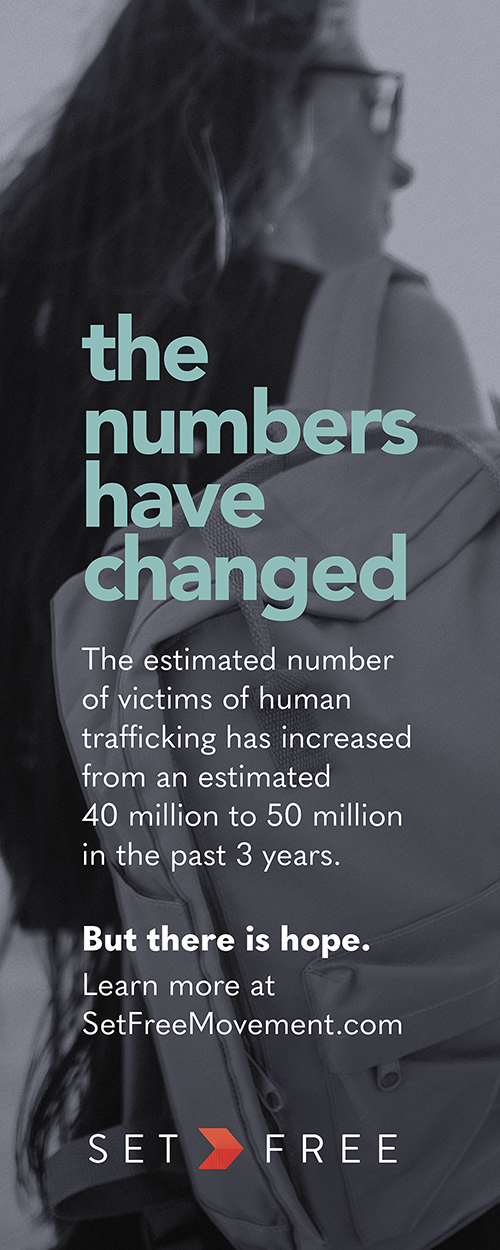
Bishop Linda J. Adams
by Bishop Linda J. Adams
Crunch! I watched in horror as the hood of my VW Jetta crumpled like tinfoil while I honked the horn with all my might. The driver of the big truck in front of me had backed into me so fast he totaled my car in two seconds.
“I’m so sorry!” he groaned. “I never even saw you!”
I guess the load piled high in the back of his truck blocked his rearview mirror, and his side mirrors’ view proved too wide to see my little car. I was in his blind spot. He didn’t mean to hit me. He just didn’t see me.
It’s sort of like that with cross-cultural blind spots. Without intending harm, we make false assumptions about people’s existence because we’re seeing them only through our own cultural lenses. As Jesus warned, we could very well have a plank in our own eye while we point out the speck of sawdust in another person’s eye (see Matthew 7:1–5). An African proverb says it this way: “Strangers have their eyes wide open, but they see very little.”
For the American context, it is significant to know that 75 percent of Whites have “entirely White social networks without any minority presence” and that the same kind of reality holds true for almost two-thirds of Black Americans (“The Third Option: Hope for a Racially Divided Nation” by Miles McPherson, quoting statistics from the Public Research Institute). This social divide inevitably creates blind spots. How can we learn not to judge one another without understanding each other? Can we find ways to “walk a mile in each other’s shoes”? How can we work collaboratively to reach the variety of people in our cities and communities with the Good News of Jesus if we live in isolation from one another?
For many Free Methodists in the U.S., cross-cultural exposure has first been experienced on short-term international mission trips. Tens of thousands have gone on Volunteers in Service Abroad (VISA) trips to visit and serve in another part of the world. Almost always, VISA teams return home reporting eye-opening and humbling experiences: “The people we met had so little but were so generous!” “The children were poor but so happy!” “The church’s high-energy worship went on for three hours and nobody got tired!”
Lasting impressions have often been formed around memories of passionate faith, sacrificial hospitality, family solidarity and delicious, exotic food. The beauty of another culture was on full display, and the VISA team eventually realized, “We went to help, but actually we found out we were there for God to open our eyes to ourselves and our world. We learned far more than we taught.” And that is, in fact, one reason to send teams. People gain from the experience of “Crossing Cultures 101.”
But of course, only the most basic lessons can be learned in a week or two. And sometimes appearances deceive, and we are so blind to the impact of our own presence and culture that our learning is flawed. How can we get beyond first impressions and host/guest politeness and begin to understand at a deeper level? How can we gain a worldview shaped by intercultural intelligence rather than surface realities?
That’s where collaboration comes in. We need each other. When our brothers and sisters around the world become our real partners, we take a learning posture with them. When they recognize in us a desire to be true co-laborers, they can speak the hard truth and ask the hard questions and learn from us as well. We all move beyond judging based on outward appearances to appreciating something closer to what God sees, the heart (1 Samuel 16:7). Humility can lead to true knowledge, which enhances love and respect and empowers our shared mission. Sometimes people who have begun to have their eyes opened move on to educate themselves further through reading, joining groups, or taking courses like Perspectives or those involving the IDI (Intercultural Development Inventory).
Free Methodist World Missions now works in 98 countries. We also celebrate the existence of 19 general conferences, each governed by its own Book of Discipline, bishops, and boards. We embrace the way of intercultural engagement, moving beyond old mindsets toward profound cross-cultural collaboration. The church in many countries sends missionaries to reach other tribes and language groups in their own country, as well as to evangelize and raise up leaders and churches in other nations. In the U.S., we welcome Christian leaders who immigrate here, recognizing their unique ability to organize new churches filled with immigrants from their region of the world. In all these cases, we acknowledge our own limited vantage point and recognize how God has designed the body of Christ to cooperate for the greater good.
Similar efforts are beginning in the church here in our racialized American society, but the process involves hard work and gets pretty messy. I asked an African American pastor friend how she sees our reality. She replied, “It has been my experience that most people within the church are open to having a multiracial church but not a multicultural one. This happens because we are open to allowing others to come and share our experience, but we are not so eager to allow others to come and change our experiences. Others are allowed to become one of us, but we do not always allow them to remain true to themselves. What’s missing is deep (and often painful) conversation to build meaningful relationships. We need to explore different perspectives on history, culture, the gospel, and politics. That takes a lot of time and energy. There is no way around this. There are fewer people willing to sign up for that type of collaboration!”
If “Crossing Cultures 101” was offered across the ocean, why can’t “Crossing Cultures 201” be offered across the city? It can! It must.
Last summer, interviews with our bishops and several elected African American leaders in the Free Methodist Church were livestreamed so others could hear their perspectives on racial justice. During the past year, hundreds of Free Methodists have read books and joined groups for intentional listening and learning across racial lines, expanding beyond Black/White to explore life from the vantage point of Latino, Asian, Native American, and multiracial brothers and sisters. Many have begun to notice how we distance ourselves from “the other,” whether that otherness involves gender, ethnicity, religion, political party, age, differences in ability, or any other feature that separates us. Conversations are happening. Sometimes we lament what has been lost. Sometimes we repent for our complicity and blind spots. We are always seeking to offer grace in this journey toward becoming one in Christ and experiencing a full and diverse expression of that oneness throughout our church.
“The Love Required of Us,” by Liz Cornell, is our recommended Free Methodist curriculum that is being used in multiple churches across the country to promote cross-cultural understanding in the body of Christ. Testimonies of how God is using these groups to transform lives and communities are now being shared. Greater diversity is being sought and welcomed. Areas of cultural blindness are coming into focus, leading to the admission, “Once I was blind, but now I can see.” Visit freemethodistbooks.com to order the curriculum as a paperback book or as an e-book/PDF.
Made for Oneness
Collaboration is essential to being human. Why? Because even God is not solitary but exists in a perfect community of three-in-one. Being made in God’s image — as we all are, completely, equally — means we are made for relationships of love and mutuality. God’s design is for shalom, “a peaceable interrelatedness that actively seeks the wellbeing of others” (Free Methodist World Missions’ “Theology of Mission”).
God wants all people to experience this shalom. Tragically, the earliest chapters of Genesis show terrible division resulting from the fall of the human race, beginning with enmity between the man and the woman, then between their sons Cain and Abel, ultimately involving all human society. The rest of the story of the Bible reveals God’s long game to reverse the curse and recreate shalom. Along the way, God invites people to co-labor with Him in this epochal redemptive work of repairing the breach, creating oneness among all peoples under the lordship of Christ.
How beautifully Jesus shows us how to cross over barriers to discover and experience community! Imagine His conversation with the Samaritan woman at the well in the fourth chapter of John’s Gospel. She clearly understands the dividing wall of hostility between them: culturally and religiously, He is Jewish; she is a Samaritan. (John explains in verse 9 to make sure we outsiders know — “Jews do not associate with Samaritans.”) He is a man; she is a woman. (In Jesus’ culture, His disciples were shocked to see Him dialogue with her.) He is a holy rabbi; she has had quite a history. (Even conversing with her taints His reputation!)
Yet Jesus tells her of God’s expansive plan for the human race. The true worshippers the Father seeks are not only from among the Jews — she can be a true worshipper! He reveals that He is the long-awaited Messiah for both His people and hers. The scene ends with a whole Samaritan village believing in Jesus, telling her: “We no longer believe just because of what you said; now we have heard for ourselves, and we know that this man really is the Savior of the world” (John 4:42).
As Jesus’ disciples watched, He challenged them to open their eyes and see the fruitful harvest among the Samaritans. The work of convincing them that God’s mission extends to all people groups had just begun. Kingdom collaboration took a baby step forward. Jesus had collected a diverse band of disciples — Jewish men whose politics and livelihoods would never have blended into a community of oneness without Him. As they followed and learned, He not only invited them to see these Samaritans as candidates for His movement; He showed mercy to a Roman centurion, an enforcer of the hated oppressor. He surprisingly welcomed women to travel with them and provide financial support. He touched lepers and accepted a woman with a less-than-pristine reputation’s offer to wash His feet. He ate in the homes of tax collectors and sinners. He fearlessly, graciously overcame the barriers that divide people into in-groups and out-groups.
In terms of our stereotypes, He blended the Waffle House crowd with the Starbucks crowd — blue collar with white collar; Right, Left and leave-me-out-of-politics people; all in one Jesus movement. He walked with them for three years, proclaiming and demonstrating the kingdom through His miracles and teaching. Then He sent them out two by two so they could experience His amazing power as they took the Good News to new towns and villages. Through these astonished apostles, people were healed, and demons cast out. God’s kingdom had come to the here and now.
How Did We Get from There to Here?
The book of Acts shows the breathtaking spread of the church from one people group to another. The Day of Pentecost in Chapter 2 marked the Holy Spirit’s co-laboring toward this grand goal as people from all over the known world heard the message of Jesus in their own language. As persecution scattered the believers, the message spread like wildfire, but hit some firewalls of culture along the way. For instance, in Chapter 6, a dispute arose because Hellenistic (Greek-speaking) Jewish widows were being discriminated against in the distribution of food. The matter was settled by choosing seven deacons with the right culture and language to attend to these neglected women’s needs. Barrier crossed.
Chapter 8 describes Philip, one of these deacons, experiencing a tremendous turning to Jesus among Samaritans, with signs and wonders demonstrating God’s healing power. Right after this, an angel sends Philip to meet an Ethiopian government official who was leaving Jerusalem by chariot. Philip simply obeys, and a most amazing conversion ensues. Philip baptizes the official and then miraculously disappears. The plot has thickened! The Ethiopian takes the Good News of Jesus back home to Africa.
Chapter 10 tells the story of the Jew Peter overcoming a lifetime of prejudice against Gentiles as God orchestrates an encounter with the Roman centurion named Cornelius. Complete with parallel confirming visions and a powerful outpouring of the Holy Spirit on a whole Gentile family, the wall between Jew and Gentile is breached. The book of Acts carries the story onward, with the message crossing barriers all the way to Rome.
This begins to fulfill God’s Old Testament promises that through the Israelites, God would ultimately bless the whole earth. From the Creation of all things in Genesis to the full restoration of all things in the book of Revelation, God’s aim has been to unite all things in Christ. Revelation 7:9–10 paints the picture: “After this I looked, and there before me was a great multitude that no one could count, from every nation, tribe, people and language, standing before the throne and before the Lamb. They were wearing white robes and were holding palm branches in their hands. And they cried out in a loud voice: ‘Salvation belongs to our God, who sits on the throne, and to the Lamb.’”
A Little Taste of Heaven
About 300 of us got a little taste of this scene a few weeks ago on a Zoom global prayer meeting led by Free Methodist World Missions. Translation was available in nine languages. Four people from Asia led out in prayer for Europe. Four from the Middle East prayed for Africa. Four Africans prayed for Latin America. By the end, each continent had offered intercession for others and everyone had received the blessing of being prayed for. It was powerful! At the end, the organizer told us we could unmute ourselves to say goodbye. For a full five minutes, blessings and farewells were called out in nine languages. Nobody wanted to leave! It was like a reunion of long-lost loved ones, reaching out for a virtual embrace, some weeping, calling across the void, “I love you!” “God bless you!” “Until next time!” We realized that most of us will never meet in person on earth, but, united in Christ and joined as a global movement for the cause of Christ, we love each other even now and are assured of a grand meeting in heaven.
Whenever we experience supernatural oneness that transcends natural human divisions, we discover that we are part of the answer to Jesus’ fervent prayer. Right before His arrest, crucifixion and resurrection, He prayed:
“My prayer is not for them alone. I pray also for those who will believe in me through their message, that all of them may be one, Father, just as you are in me and I am in you. May they also be in us so that the world may believe that you have sent me. I have given them the glory that you gave me, that they may be one as we are one — I in them and you in me — so that they may be brought to complete unity. Then the world will know that you sent me and have loved them even as you have loved me” (John 17:20–23).
Our unity brings glory to God. Our unity convinces the world that the Father has sent the Son. Our unity communicates to a watching world the unspeakable love of God. Let’s do whatever it takes to seek and find that unity. Everything is at stake.+











Bishop Linda! A most excellent article, argument, testimony and hope. I would also suggest that your orientation requires a turning, especially for those of us who are Euro-Americans. We need to repent. We all learned that the Free in Free Methodist had to do with freedom for slaves but do we have any articles or sermons or books from our founders or leaders against slavery, against lynching, in support of the Civil Rights movement? I don’t think that freedom for our Black brothers and sisters is or was ever at the center of our DNA. Having this basic respect for Black people and other collaborators of color is necessary to express the Good News of Jesus in our segregated and violent society. It is necessary to express the unity and witness of true faith. You are right that we need to start by listening, and we also need to move our listening bodies into neighborhoods and spaces where Black people and POC are leading so that we can begin to have glimpses of the Kingdom of God like you had on Zoom with 300 Free Methodists from around the world. If we don’t we will continue to keep our knee on the throats of our Black brothers and sisters who live with their backs against the wall and their bodies, selves and souls disrespected by their white neighbors who call them sisters and brothers, to whom we say “go in peace” without us going and paying the price to make peace.
Thank you, Craig. There is no doubt that we have blind spots in the area of Black/White relationships in the US especially. We have a long way to go to be the “repairers of the breach” that God envisions his people to be. I believe you are right that this has never been the center of our DNA. B. T. Roberts, was out in front of the rest of our founders, and he did write against slavery in powerful terms. His abolitionist writings are one of the things that got him expelled from the Methodist Episcopal Church. But he was more prophetic than most of his peers and the Free Methodist Church lost that prophetic edge. Our forebears in the Civil Rights era were almost all silent. As you know, minority voices like Gilbert James and others who followed him (the Howard Snyder, Dwight Gregory, Howard Olver generation) have been calling us to repentance and faithfulness on this for a long time. I’m thankful for the few who live into this value (for instance, see Mark Van Valin’s article in this issue and the article on the new church planting team in Dallas). I’ve glimpsed a little bit of heaven in African American and multicultural worship services here in the US and want that for everyone. So much to learn, so far to go. But we are on the journey. Thanks again for your comments.
Thank you for a most excellent perspective. I am thankful that our church welcomes everyone, both of all races and of all economic levels. I would like to see a larger representation of other races and cultures in my own congregation, but I’m glad for the variety we have. Through my black son-in-law I have seen some of the less obvious discrimination that still happens here and I’m glad we are speaking against that. May God continue to guide the Free Methodist Church into more and more unity around the world.
Carol, Glad you’ve been able to learn about discrimination through your Black son-in-law’s lived experience. I hope your church can grow in the area of diversity, too. Everyone will be the richer.
Thank you, Bishop Linda. I enjoyed the biblical examples you shared. We are all fine. Corey is an inch shorter than me, Caleb is a head taller. Yuko and I are still neck and neck. Have a glorious day.
Glad to hear from the Wilkins family! We are grateful for your missionary service.
This is an excellent article. I am forwarding a link to some who may have missed it.
One of the greatest joys of my 50+ years of ministry has been helping bring people together across cultures. One thing I have thought of, that came back to me as I read your article, is that it is sometimes easier to develop cross-cultural appreciation among three or more groups than among two. By definition, “polarization” is a function of seeing only two options. Back in New York City days when we had churches worshiping only in Spanish and English (as is the case in Oklahoma where I serve now), it was easy for each group to develop its own ways and own channels of fellowship, not rejecting the other, but not necessarily seeing the need for each other. As we added Haitian, Arabic, Indo-Pakistani, Japanese, and other groups, it became essential that we learn more about cross-cultural issues Thinking about the issues in the Free Methodist Church right now, I would suggest that where we are sometimes hung up on Black/White issues, our Asian American members of the family may be able to help as dialogue partners. The Pacific Coast Japanese Conference perhaps has the largest percentage of truly multi-racial and somewhat multi-cultural churches among the various conferences of the denomination. I am not in as close contact with them as when I lived on the East Coast or West Coast, but I would hope they can help us as we move forward–and especially now as anti-Asian antagonism (even against second and third generation Asian-Americans!) is either growing or becoming more recognized.